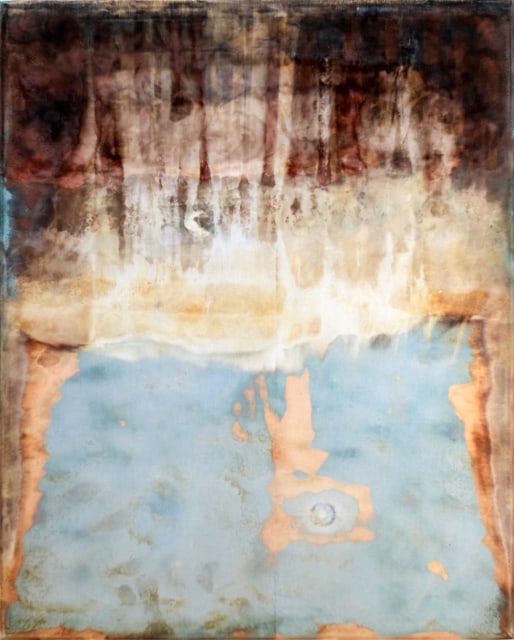AIR ELECTRIC is Michael Sailstorfer’s fourth solo exhibition with the gallery, bringing together three series of works that explore a subject that couldn’t be more relevant today, and has long been one of the artist’s signature themes: energy.
Sailstorfer reflects on energy in its various forms – as a source, as storage, as a transmitter, as working material – in short, as fuel for life.
The sculptural series C-Batterie, an homage to one of Sailstorfer’s artistic role models, Joseph Beuys, plays with common notions of classical sculpture such as eternity, uniqueness and preconceived values. At first glance, the five bronze casts on white pedestals seem to fulfil these ideas: an eternal, precious material, presented as a unique sculpture on a traditional plinth – a monument to energy. But is this really the case?
Referencing Joseph Beuys’ Capri-Batterie (1985), an edition of 200 made from common, perishable materials, the original work consists of a bright yellow light bulb in a socket connected to a lemon. By using the lemon as a source of energy, Beuys demonstrated that all forms of energy come from nature and that nature’s resources are limited. Accompanied by instructions to replace the battery every 1000 hours, Beuys emphasized the precarity of our finite resources. The two components of the Capri battery are similar in size, shape and color; perfectly in harmony, suggesting that the tension between the finite resources of nature and the demands of technological development can be balanced.
Sailstorfer’s adaptation upsets this very balance – an allegory for societal inequality, portrayed with humor and contradiction. He creates wax models of the original Capri battery, places them in beehives and leaves the bees to work on them. After a few months, the molds are removed and cast in bronze. The resulting work feels as if nature has taken over, with honeycomb structures growing all over the original forms, destabilizing and questioning the so-called balance, as well as capturing the transience and the creative energy of the moment. Another set of casts made from ordinary lightbulbs, using the same process, are suspended from the ceiling with reference to their original function.
As so often, Sailstorfer introduces the element of chance in his work which contrasts with the more deliberate medium choice. Bronze is one of the most valuable metals in the recycling industry, its ability to be recycled with minimal loss of quality makes it not only a precious metal, but also an environmentally friendly one. This ecological concern closes the circle, connecting the two artists from different generations.
Sailstorfer’s latest series AIR ELECTRIC – from which the exhibition takes its title – follows on from his previous exhibition at CARBON 12 (2022) by further exploring the idea of landscape painting with innovative and novel techniques. Deeply interested in experimenting with the transformative qualities of industrial materials, Sailstorfer turns electricity into his painting medium. A very thin copper fabric is stretched over a wooden frame, while a power supply unit provides a constant flow of direct current. The negative pole is connected to the conductive copper mesh. The positive pole is connected to a stainless-steel rod with a fleece-covered tip, which is used as a “brush.” The fleece is immersed in a silver electrolyte. When the brush touches the copper mesh, the circuit closes and the silver ions from the electrolyte combine with the copper. The result is an abstract, electric landscape of pale blue cloud formations against a golden sky. Occasionally, certain shapes can be made out through the web of clouds, but the interpretation of the work is ultimately left to the viewer. The series seems to stem from a distant past, and we are only slowly realizing the many layers of history that lie beneath it.
Once again, Sailstorfer leads us to believe that the outcome is determined by chance, this, and the choice of material, offers a clear connection between the two series. There is an intrinsic link between the two materials, bronze consists of at least 60 per cent copper. Moreover, copper has many desirable properties that are yet to be surpassed by any other material, making it indispensable in industry.
Going back in time, the exhibition closes with a new addition to one of Sailstorfer’s older series: the Tank series (since 2020). Tank 11 (2024) consists of an empty Audi fuel tank, deprived of its original function and context by being hung on the wall. The tank takes on anthropomorphic features, reminiscent of oceanic masks from a bygone era. A breathing sound fills the last part of the room, reminding us that energy in any given form is always fuel for life.
- Marianne Dobner
97

